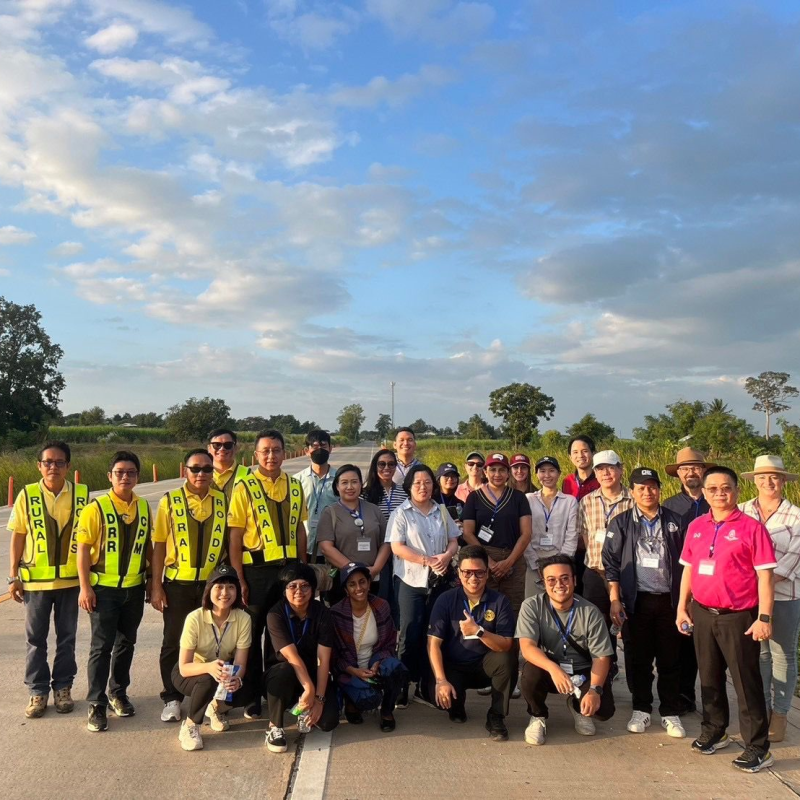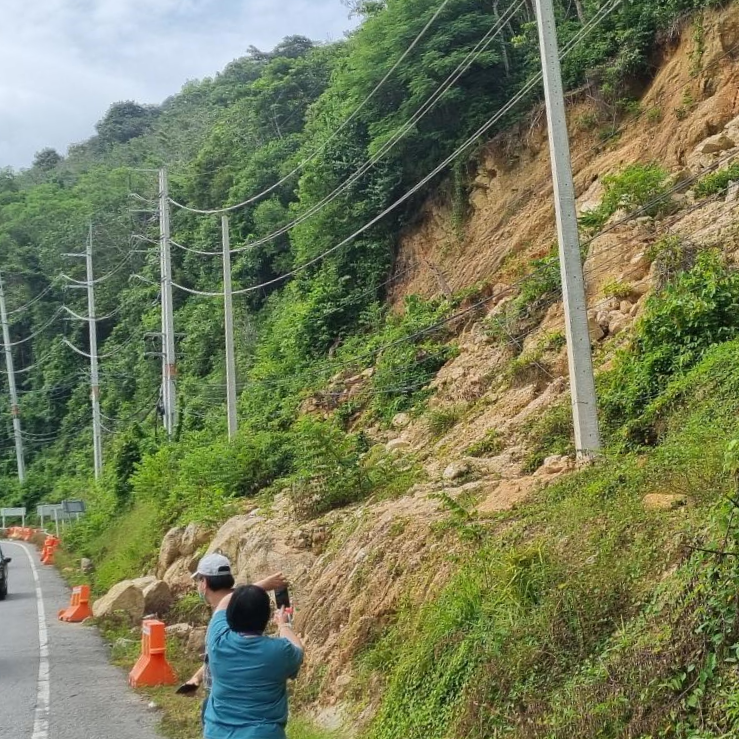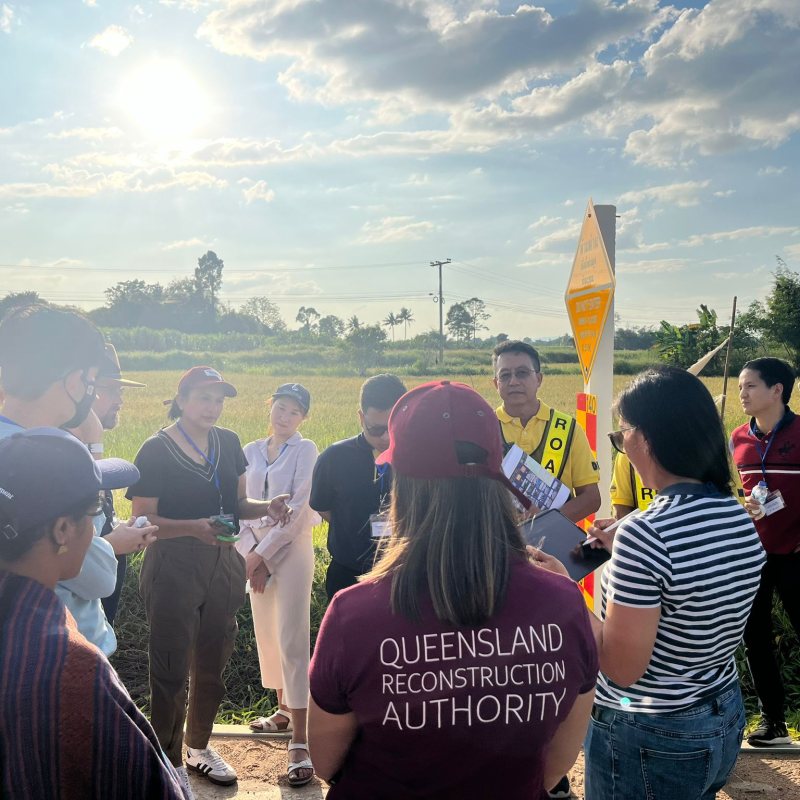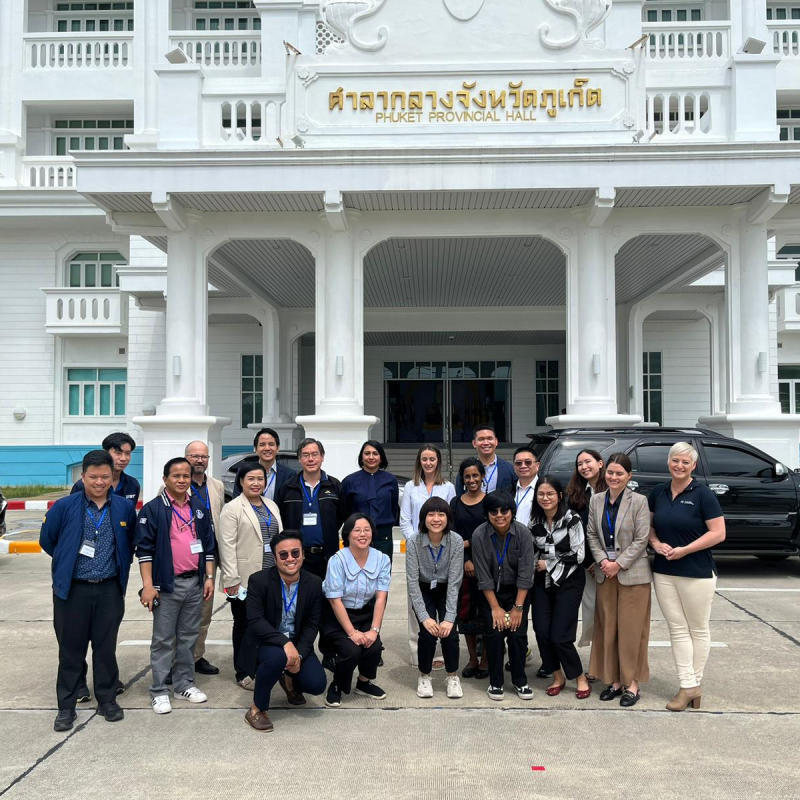QRA brings benefits of building back better to Thailand
Almost 6,000 kilometres north-west of Australia, the tropical paradise of Thailand finds itself increasingly vulnerable to the threat posed by climate change.
Torrential rain, floods and landslides are becoming more frequent and more costly as the region warms and gets much, much wetter.
Budgetary constraints that compromise the integration of resilience into infrastructure planning mean disaster recovery works are often limited to rebuilding to pre-disaster standards.
Vital transport infrastructure, for example, isn’t rebuilt to enhanced standards that can better withstand the impacts of future disaster events.
To help Thailand address these challenges, an Australian delegation travelled to the Asian nation in November 2024 for a five-day in-country, knowledge-sharing mission as part of the Australian Government’s Partnerships for Infrastructure (P4I) program.
Delegates from the Queensland Reconstruction Authority and the Bureau of Meteorology met with representatives from Thailand’s Ministry of Transport and its Meteorological Department to discuss the importance of embedding resilience into all aspects of disaster recovery.
Visits to disaster affected areas in north-eastern and southern Thailand and a series of technical discussions provided insight into physical challenges on the ground, and policy and procedural barriers to investing in more resilient infrastructure.
Thai officials identified local issues including difficulties in accessing funding quickly, inconsistent reconstruction standards, and the need for more streamlined processes during post-disaster recovery.
During the technical sessions, QRA co-led a workshop on the use of real-time data for disaster funding decisions in Queensland, and introduced other delegates to the Sustainable Asset Valuation (SAVi) decision-support model that quantifies the long-term value of resilience-focused investments.
QRA delegates also provided insight into resilience, explaining how it's woven into every stage of infrastructure planning and delivery, with strong governance, tailored business cases, targeted funding, and local engagement all combining to embed resilience into every aspect of recovery.
They also detailed how that approach has evolved over time, improving coordination across different levels of government, and how affected communities are now directly involved in identifying priorities.
Key insights from QRA that can guide future efforts in Thailand include the better use of weather and climate data, using tools like SAVi to build business cases for building back better, and taking a collaborative approach to embedding resilience into decision-making.
QRA’s role in the 2024 mission has laid solid groundwork for deeper collaboration with Thai officials, with the common goal of making infrastructure safer, more reliable, and better prepared for the future.
During 2025, QRA and Thailand’s Ministry of Transport have explored specific elements of Queensland’s governance model, such as SAVi, and are piloting innovative approaches for Thailand’s reconstruction program.
This collaborative approach aligns closely with Australia’s broader objectives to promote sustainable and inclusive infrastructure development across the region.
It also supports Australia’s Southeast Asia Economic Strategy to 2040, which seeks to enhance shared prosperity for the wider region through increased trade and investment.




